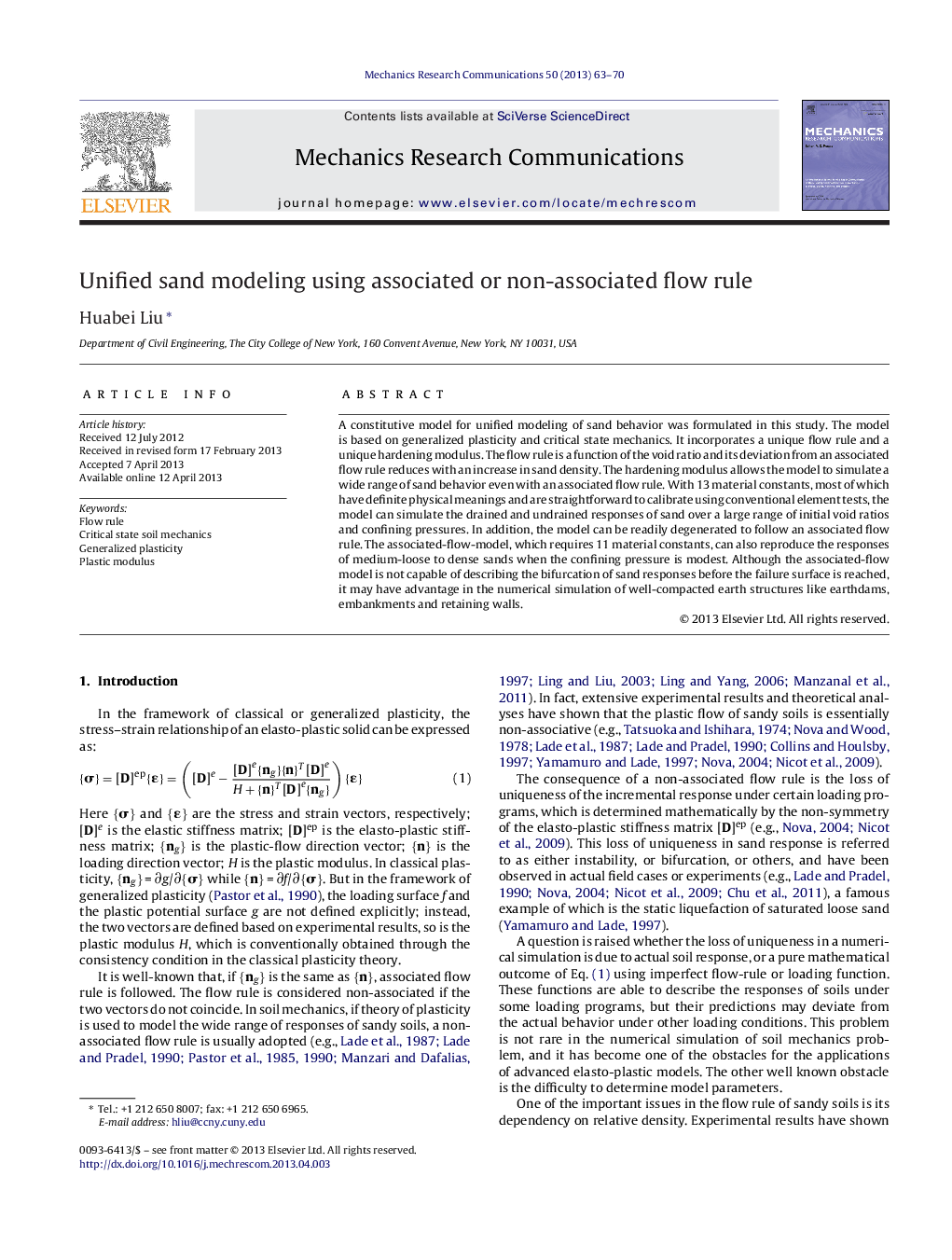| Article ID | Journal | Published Year | Pages | File Type |
|---|---|---|---|---|
| 801586 | Mechanics Research Communications | 2013 | 8 Pages |
•A constitutive model for unified modeling of sand behavior is proposed.•The model assumes a non-associated flow rule that is void-ratio-dependent and can be degenerated to follow associated flow rule.•With 13 material constants the non-associated-flow model can describe the wide-range responses of sand, including instability.•The associated-flow model needs 11 constants and has the capacity to simulate the responses of medium-loose to dense sands.
A constitutive model for unified modeling of sand behavior was formulated in this study. The model is based on generalized plasticity and critical state mechanics. It incorporates a unique flow rule and a unique hardening modulus. The flow rule is a function of the void ratio and its deviation from an associated flow rule reduces with an increase in sand density. The hardening modulus allows the model to simulate a wide range of sand behavior even with an associated flow rule. With 13 material constants, most of which have definite physical meanings and are straightforward to calibrate using conventional element tests, the model can simulate the drained and undrained responses of sand over a large range of initial void ratios and confining pressures. In addition, the model can be readily degenerated to follow an associated flow rule. The associated-flow-model, which requires 11 material constants, can also reproduce the responses of medium-loose to dense sands when the confining pressure is modest. Although the associated-flow model is not capable of describing the bifurcation of sand responses before the failure surface is reached, it may have advantage in the numerical simulation of well-compacted earth structures like earthdams, embankments and retaining walls.
